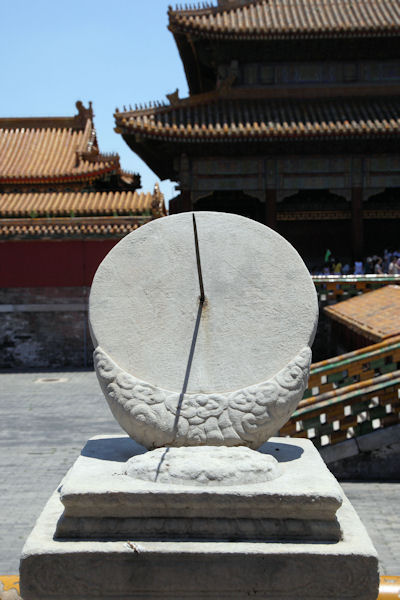
|
Forbidden City Sundial - 3 The marble Rigui (sundial), in the east and the Jia Liang (an ancient measuring vessel) in the west were placed there to show that the emperors were just and fair. The sundial is a specialized gnomon. The shaft is actually called a gnomon. The example on this page is an equatorial sundial, meaning tit is aligned with the equatorial plane. The dial will be higher in the south celestial pole and lower in the north celestial pole. You read the upper part of the dial in the summer (from the vernal equinox to the autumn equinox) and the lower part of the dial in the winter (from the autumn equinox to the vernal equinox). The equinox is defined as that point at which the sun's path or ecliptic crosses the equatorial plane of the earth. When that happens you can't really tell time from the sundial. Another difficulty with sundials is shown in the picture below of the sundial at the Palace Museum at the Forbidden City. When it rains, you might as well take the day off if you are the Emperor's timekeeper. That gave rise to the urge to invent clepsydra and other types of predictable clocks. They could be checked and set by the sundial when the need arose. The astronomer in the court would also take exact star readings at night to provide accurate checks on the "mechanical" clocks. ⇦ Back to Page 2 Return to Forbidden City Page 1 On to Page 4 ⇨Hi-Res Pic (107K) |